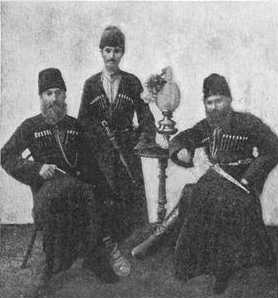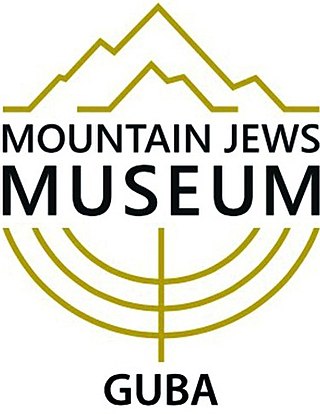
Mountain Jews or Caucasus Jews, also known as Juhuro,Juvuro,Juhuri,Juwuri, Juhurim,Kavkazi Jews or Gorsky Jews, are Jews of the eastern and northern Caucasus, mainly Azerbaijan, and various republics in the Russian Federation: Chechnya, Ingushetia, Dagestan, Karachay-Cherkessia, and Kabardino-Balkaria. The Mountain Jews comprise Persian-speaking Jewry along with the Jews of Iran, Afghanistan, and Central Asia. The Mountain Jews are the descendants of Persian Jews from Iran, and fall within the Mizrachi category of Jews. Mountain Jews took shape as a community after Qajar Iran ceded the areas in which they lived to the Russian Empire as part of the Treaty of Gulistan of 1813.

Bevis Marks Synagogue, officially Qahal Kadosh Sha'ar ha-Shamayim, is the oldest synagogue in the United Kingdom in continuous use. It is located off Bevis Marks, Aldgate, in the City of London.

The West London Synagogue of British Jews, abbreviated WLS, is a synagogue and congregation near Marble Arch in central London. It was established on 15 April 1840. The current synagogue building in Upper Berkeley Street, dedicated in 1870, is Grade II listed. It is one of the oldest synagogues in the United Kingdom and it was the oldest house of prayer affiliated with the Movement for Reform Judaism, before its affiliation lapsed in February 2023.

Islam is the majority religion in Azerbaijan, but the country is considered to be the most secular in the Muslim world. Estimates include 97.3% and 99.2% of the population identifying as Muslim. Of these, a majority belong to the Shia branch (55-65%), while a significant minority (35-45%) are Sunni. Traditionally, the differences between these two branches of Islam have not been sharply defined in Azerbaijan.

Sukkat Shalom Synagogue or Belgrade Synagogue is the only fully active Jewish place of worship in Serbian capital Belgrade, although there are other synagogue buildings in the city. It is located in central Belgrade, near Obilićev Venac Square and central high street Knez Mihailova.

Sarajevo Synagogue is Sarajevo's primary and largest synagogue and is located on the south bank of the river Miljacka. It was constructed in 1902 and remains the only functioning synagogue in Sarajevo today.

The history of the Jews in Azerbaijan dates back many centuries. Today, Jews in Azerbaijan mainly consist of three distinct groups: Mountain Jews, the most sizable and most ancient group; Ashkenazi Jews, who settled in the area during the late 19th-early 20th centuries, and during World War II; and Georgian Jews who settled mainly in Baku during the early part of the 20th century.
Dilyara Alakbar qizi Aliyeva was an Azerbaijani philologist, translator, Women's rights activist and Member of The Supreme Council of Azerbaijan from 1990–1991.

Adolf Eichler was a German civil architect, best known for building the Saviour's Church and participating in boulevard development, both in Baku. He committed suicide after developing smallpox in 1911.
Jews have a long history in Singapore, dating back to the 19th century, and are currently a significant minority population in the country.

B'nai Jeshurun is a non-denominational Jewish synagogue located at 257 West 88th Street and 270 West 89th Street, on the Upper West Side of Manhattan, in New York City, New York, in the United States.
The Udmurt and Tatar Jews are a special ethnocultural group of Ashkenazi Jews, which originally formed in the areas of the mixed Turkic-speaking, Finno-Ugric-speaking, and Slavic-speaking (Russians) population. From 1807, Jewish people also began to reside in the industrial and administrative centers of Sarapulsky Uezd. Until this time the Jews in this region lived only in Kazan. The occurrence of Jewish communities in the region was made possible only after the decree of Emperor Nicholas I of Russia on August 26, 1827 on the introduction of conscription for the Jews.

The Brodsky Synagogue in Odesa was built by the Jews from Brody in 1863 in Odesa, Ukraine. It was the largest synagogue in the south of the then Russian Empire. People came from all over the world to hear cantors sing there.
In Azerbaijan, there are three main Jewish communities – mountain Jews, Ashkenazi Jews and communities of Georgian Jews. The total number of Jews in the country is 16,000. Of these, 11,000 are mountain Jews, about 6,000 in Baku, 4,000 in Guba and thousands in other cities. Ashkenazi Jews are 4.3 thousand people. Most of them live in Baku and Sumgayit. The Georgian Jews are about 700.

World Congress of Mountain Jews (WCMJ) is an active, international non-governmental organization that provides opportunities for Mountain Jews, who are dispersed worldwide. WCMJ seeks to bring together the Mountain Jew population to maintain and share traditions and cultural values through cooperation with international society. The organisation plays an integral cultural role for Mountain Jews globally, through official representation of their interests – which includes engagement with governmental and social bodies. It brings together the mountain Jews of Israel, United States, Russia, Canada, Azerbaijan, Germany, Austria, Georgia, Kazakhstan, and other countries.

Bet Sima Synagogue or Vladivostok Synagogue is a Jewish synagogue in the Russian city of Vladivostok and the only synagogue in Primorsky Krai. It is the oldest continuously operating synagogue in the Russian Far East.

Gasimov brothers were the co-owners of the "Gasimov Brothers and Co" construction company, which carried out the construction of the most of the buildings in Baku in the late 19th - early 20th centuries. The brothers built such monumental buildings as Ismailia, the Saadat Palace, the New Europe Hotel, and the Mitrofanov Palace. According to Fuad Akhundov, Kasumovs, who built most of the houses of Musa Nagiyev in Baku, carried out the construction work of all buildings raised at that time on the current streets of Istiglalliyyat, and 28 May. In addition, the brothers were involved in charity activity too.

The Derbent Synagogue, also known as Kele-Numaz is the only synagogue in the city of Derbent in the Russian Republic of Dagestan.

The Museum of Mountain Jews is a museum in Guba, Azerbaijan, dedicated to Mountain Jews. Opened in 2020, it is located in the 19th-century Karzhog Synagogue. It is the first and only museum in the world devoted to Mountain Jews.

Fantasia bath — a bath dating back to 1896, located on Dilara Aliyeva Street in Baku. It was the first commercial building with an electric line in the city and one of the first European-style baths in Baku.
















